#Eco-Friendly Metal Techniques
Explore tagged Tumblr posts
Text
Sustainable Practices in Metal Processing: Shaping a Greener Future

The metal processing industry stands at the crossroads of innovation and sustainability, seeking to reduce its environmental footprint while maintaining efficiency and productivity. As global awareness of environmental issues grows, so does the push for sustainable practices within this sector. This blog explores how the metal processing industry is embracing greener technologies and methodologies to pave the way for a more sustainable future.
Sustainable Innovations in Metal Processing:
Recycling and Material Recovery: Advances in sorting and processing technologies have significantly improved the efficiency of metal recycling, turning scrap into high-quality materials for new products.
Energy-Efficient Processes: From electrification of heat processes to the adoption of renewable energy sources, the industry is cutting down on carbon emissions and energy consumption.
Water Conservation Techniques: Innovations in water treatment and recycling reduce the industry’s water footprint, ensuring that less freshwater is consumed during metal processing.
The Benefits of Going Green:
Reduced Environmental Impact: By minimizing waste and emissions, metal processing companies are contributing to cleaner air and water, and less landfill.
Cost Savings: Energy and resource efficiency not only benefit the planet but also lead to significant cost reductions in the long run.
Market Advantage: Sustainability is increasingly becoming a competitive edge, with more customers and partners favoring environmentally responsible companies.
Conclusion
The journey towards sustainability is both a challenge and an opportunity for the metal processing industry. By investing in eco-friendly technologies and practices, businesses can ensure their growth while safeguarding the planet for future generations. The shift to sustainability is not just about compliance but about embracing a vision for a greener, more sustainable industry.
Original content: https://quickmetals.com/sustainable-practices-in-metal-processing-shaping-a-greener-future/
#Cincinnati Metal Fabrication#Eco-Friendly Metal Techniques#Sustainable Manufacturing Practices#Sustainable Metal Processing
0 notes
Text
What is the Resale Value of a Home with Residential Metal Roofing?
If you’re considering a roofing upgrade, you might wonder about the impact of residential metal roofing on your home's resale value. Home improvements are investments, and it’s natural to want to know how those investments—like a new roof—can pay off in the long run. In this article, we’ll explain the benefits of metal roofing, its effect on resale value, and why it may be a smart choice for homeowners looking to enhance their homes and overall property value.
Understanding Residential Metal Roofing
Residential metal roofing has gained popularity in recent years for several reasons. Its durability, longevity, and eco-friendly attributes make it a compelling option for homeowners. Let’s explore how these features can influence your home’s appeal when it's time to sell.
Durability and Longevity: A Key Selling Point
One of the standout features of residential metal roofing is its impressive lifespan. Unlike traditional asphalt shingles, which might need replacing every 15-30 years, metal roofs can last 40-70 years or more with proper maintenance. This durability can be a significant selling point for potential buyers. When they see a metal roof, they may feel reassured that they won't have to deal with roofing issues for decades.
Eco-Friendly Appeal
With a growing number of people prioritizing sustainability, residential metal roofing can enhance a home's appeal. Metal roofs are often made from recycled materials and are recyclable at the end of their lifespan. This eco-friendliness can attract buyers looking for homes that align with their values. According to the Metal Roofing Alliance, metal roofs can contain up to 90% recycled content, making them a responsible choice for environmentally conscious homeowners.
Energy Efficiency: Lower Bills, Higher Value
Another factor to consider is energy efficiency. Metal roofing helps regulate indoor temperatures, keeping homes cooler in the summer and warmer in the winter. This can lead to lower energy bills, an attractive feature for buyers. Homes with energy-efficient upgrades often command higher resale values, as buyers are willing to pay a premium for long-term savings.
Maintenance Considerations
When discussing residential metal roofing, it’s important to address maintenance. Metal roofs require relatively low maintenance, but annual inspections are essential to catch potential issues early. A well-maintained roof can enhance your home’s value, as buyers appreciate knowing they won't have to invest in repairs soon after purchase.
Potential Concerns: Sound and Cost
While residential metal roofing has many advantages, some potential buyers may have concerns about noise during rain or hailstorms. However, advancements in installation techniques and insulation have significantly reduced these concerns. Additionally, the initial cost of metal roofing can be higher than traditional options, averaging around $11,000 for a standard-sized roof. Despite this, many homeowners find that the long-term savings on repairs and energy bills make metal roofs a worthwhile investment.
How Residential Metal Roofing Affects Resale Value
Now that we’ve explored some benefits and considerations let’s examine how residential metal roofing can impact resale value. Research indicates that homes with metal roofs can have a resale value of 1-6% higher than comparable homes with asphalt shingles. This increase can vary based on location, market trends, and the house's overall condition.
Local Market Trends
The impact of residential metal roofing on resale value can also depend on local market conditions. In regions where metal roofs are popular, the resale value may increase more substantially than in areas where they are less common. It’s always a good idea to consult with a local real estate agent who can provide insights into your specific market.
Buyer Perceptions
How buyers perceive the value of residential metal roofing can greatly influence resale prices. Many buyers view metal roofs as a premium feature that makes your home more attractive than others in the neighborhood. If your home stands out for its energy efficiency, durability, and aesthetic appeal, you may find it easier to justify a higher asking price.
Is Residential Metal Roofing Worth It?
Investing in residential metal roofing can benefit homeowners looking to enhance their property’s value. The durability, energy efficiency, and eco-friendly aspects make a strong case for choosing metal over traditional roofing materials. While the initial cost may be higher, the long-term benefits and potential increase in resale value can make it a sound investment.
If you want to upgrade to metal roofing and explore energy-efficient roofing solutions, consider contacting Lastime Exteriors. They offer various services that meet your home improvement needs and can help you navigate the options available to maximize your home's value.
7 notes
·
View notes
Text
What to Look for in Herbal Extracts Manufacturers in India
Introduction
As the demand for plant-based wellness, cosmetic, and nutraceutical products rises globally, businesses are actively seeking herbal extracts manufacturers in India who offer high-quality, sustainable, and customized solutions. Whether you're sourcing herbal extracts, oil extracts, or partnering with a fragrance manufacturer, the right supplier is key to delivering premium formulations.
India, with its rich biodiversity and Ayurvedic legacy, is home to many natural product manufacturers. But how do you choose the one that meets your quality standards and business goals?
This guide will help you understand what makes a manufacturer reliable — and why leading companies partner with Nuleaf Naturals, one of the top herbal extract and oil extracts manufacturers in India.
Mastery in Botanical Extraction Technologies
A manufacturer’s expertise in extraction techniques directly impacts the purity, efficacy, and safety of the final product. At Nuleaf Naturals, we combine traditional herbal wisdom with modern science using advanced extraction technologies such as:
Supercritical CO₂ Extraction (SCFE): Ideal for solvent-free, potent herbal and oil extracts — widely used in cosmetics and nutraceuticals.
Steam Distillation: Best suited for aromatic compounds and essential oils, preserving delicate fragrance notes.
Short Path Distillation: Useful for high-purity concentrates with minimal heat degradation.
Solvent Extraction: Effective for herbs where other methods may not deliver optimal yields.
By investing in cutting-edge infrastructure, we ensure our extracts meet international quality benchmarks.
Certifications That Guarantee Quality and Compliance
Regulatory compliance is non-negotiable when choosing herbal extracts manufacturers in India. Top-tier suppliers should offer:
GMP Certification (Good Manufacturing Practices)
ISO Certification for quality assurance
FSSAI Registration to ensure food-grade safety
HACCP Certification for hazard analysis and critical control
These certifications demonstrate a manufacturer's commitment to standardized processes and safety protocols. At Nuleaf Naturals, we maintain rigorous quality systems backed by all essential certifications.
Extensive Product Portfolio and Customization Options
A good natural product manufacturer offers not only variety but also customization. At Nuleaf Naturals, our comprehensive product line includes:
Herbal Extracts (e.g., Ashwagandha, Brahmi, Tulsi, Turmeric)
Essential & Oil Extracts (e.g., Lemongrass, Eucalyptus, Lavender)
Oleoresins, Hydrosols, and Fragrance Compounds
Custom Ayurvedic Formulations for wellness and skincare brands
We also offer tailored services including:
Custom potency levels and particle size
Private/white labeling
Third-party testing and documentation
Bulk supply and formulation assistance
This flexibility ensures that our clients get exactly what they need for product development.
Transparent Testing and Full Documentation
Trustworthy manufacturers provide full transparency through lab reports and third-party testing. Nuleaf Naturals guarantees:
Certificates of Analysis (COA) for every batch
Heavy metal and pesticide screening
Microbial testing to ensure safety
Batch-specific traceability
This documentation builds trust with your end customers and helps you stay compliant with global safety standards.
Environmentally Responsible and Ethical Manufacturing
Sustainability is no longer optional — it’s a key value proposition. As an eco-conscious herbal extract manufacturer, Nuleaf Naturals is committed to:
Green extraction techniques with minimal solvent waste
Eco-friendly packaging and waste reduction policies
Ethical sourcing directly from certified organic farms
By choosing a sustainable manufacturing partner, your brand benefits from environmental stewardship and stronger consumer loyalty.
Dependable Supply Chain and Bulk Production Capacity
When scaling your operations, you need a manufacturer that can deliver high volumes without compromising quality. At Nuleaf Naturals, we offer:
Bulk herbal extracts and oil extracts with reliable restocking
Global shipping and export support
Custom contract manufacturing for long-term partnerships
White labeling and B2B collaboration models
With a robust supply chain and on-time delivery, we help your business maintain consistency and meet market demand efficiently.
Proven Industry Experience and Global Clientele
Before finalizing your supplier, evaluate their industry track record. At Nuleaf Naturals, we bring:
Over a decade of experience in herbal extraction
Partnerships with nutraceutical, personal care, and wellness brands globally
Client testimonials that reflect satisfaction, reliability, and professionalism
Our success lies in helping brands around the world create high-performing, natural products that customers love.
Conclusion
Selecting the right herbal extracts manufacturer in India goes beyond product sourcing—it's about building a strategic partnership. From technical expertise and regulatory compliance to customization and sustainability, Nuleaf Naturals offers a complete solution for businesses looking to scale with confidence.
Whether you’re a wellness startup or an established beauty brand, our team is ready to co-create high-quality formulations that align with your values and market goals.
Partner with Nuleaf Naturals — a trusted fragrance manufacturer and supplier of premium herbal and oil extracts — and unlock the full potential of nature-powered innovation.📞 Contact us today for bulk orders and B2B partnerships! +91 9866760001
2 notes
·
View notes
Text
Modern Bedroom Wall Designs That Will Elevate Your Space in 2025
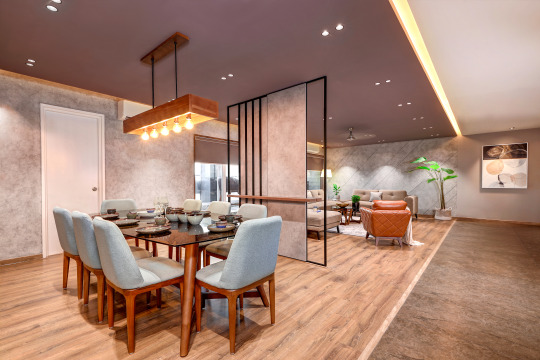
Your bedroom is more than just a place to sleep—it’s your sanctuary, a retreat where you unwind, recharge, and express your personality. In 2025, bedroom wall designs are taking center stage, transforming spaces into artistic havens with innovative materials, bold textures, and creative techniques. Whether you're looking for a minimalist touch or a bold statement, here are the top modern bedroom wall designs compiled by our interior designers in Kottayam to elevate your space this year.
1. Sculptural Wooden Panels: A Timeless Touch
Wood has always been a favorite material for bedroom walls, but in 2025, it’s getting a dramatic upgrade. Sculptural, three-dimensional wooden panels are redefining bedroom aesthetics by adding depth and movement to walls. These panels can create a cozy ambiance while absorbing sound, making the room feel intimate and restful.
Why Choose Wooden Panels?
They bring warmth and texture to the space.
Perfect for creating an eco-friendly and natural vibe.
Can be paired with muted tones like sage green or taupe for a balanced look.
Design Tip: Opt for vertical wooden panels with integrated lighting to add a modern twist to this timeless material.
2. Textured Walls: Luxury Redefined
Textured walls are making waves in modern bedroom design, mimicking the look of luxury hotel rooms. Upholstered fabric panels or plaster textures offer sophistication and tactile appeal. Neutral tones like beige or soft gray enhance the sumptuous feel of textured walls.
Popular Materials for Textured Walls:
Velvet or linen fabric panels for a plush look.
Venetian plaster for a rustic yet elegant finish.
Micro cement for an industrial-chic vibe.
Why It Works: Textured walls not only look stunning but also cocoon the space by softening sound and adding visual interest.
3. Bold Accent Walls: A Statement Piece
Accent walls are perfect for injecting personality into your bedroom without overwhelming the space. In 2025, bold wallpapers and paint colors are trending—think maximalist floral patterns, geometric designs, or saturated hues like emerald green and navy blue.
Design Ideas:
Use bold wallpaper with metallic accents to create drama.
Pair vibrant accent walls with neutral bedding to maintain balance.
Experiment with ombre effects for a subtle gradient look.
Pro Tip: Combine bold accent walls with minimalist furniture to keep the room visually balanced.
4. Wall Murals: Artistic Escapes
Forget framed artwork—this year, the entire wall becomes your canvas. Wall murals featuring nature-inspired themes, abstract designs, or celestial patterns can transform your bedroom into a personal retreat.
Why Murals Are Trending:
They add depth and personality to the room.
Create an immersive experience that enhances relaxation.
Perfect for expressing individuality through custom designs.
Design Tip: Pair murals with soft ambient lighting to highlight their intricate details and create a calming atmosphere.
5. Geometric Patterns: Sleek Modernity
Geometric wall designs bring structure and sophistication to modern bedrooms. Hexagonal tiles, argyle patterns, or angular designs in muted tones offer a minimalist yet striking aesthetic.
Why Geometric Patterns Work:
They add visual interest without cluttering the space.
Ideal for small bedrooms as they create an illusion of spaciousness.
Pair well with monochromatic color schemes.
Pro Tip: Use geometric patterns on one wall as an accent feature to avoid overwhelming the room's design.
6. Vertical Garden Panels: Nature Indoors
Biophilic design continues to dominate interior trends in 2025. Vertical garden panels bring greenery into your bedroom while purifying the air and adding a refreshing vibe.
Features of Vertical Garden Panels:
Easy to install and maintain.
Perfect for small spaces as they don’t take up floor area.
Add texture and color while boosting mental well-being.
Design Tip: Combine vertical garden panels with wood or concrete textures for a harmonious blend of nature and modernity.
7. Two-Tone Walls: Layered Elegance
Layering two complementary colors on the same wall creates visual interest while dividing spaces stylishly. This technique works beautifully in bedrooms by adding depth without overwhelming the room’s design.
Popular Color Combinations:
Taupe and blush pink for softness.
Emerald green and navy blue for sophistication.
Sage green and beige for an earthy vibe.
Pro Tip: Use two-tone walls to frame specific areas like the bed or seating nook for added focus.
8. Integrated Lighting Designs: Functional Beauty
Lighting is no longer just an afterthought—it’s now integrated directly into wall designs. LED strips embedded within wooden panels or textured walls create ambient lighting that mimics candlelight warmth.
Benefits of Integrated Lighting:
Enhances relaxation by reducing harsh overhead lighting.
Adds layers of depth and drama to wall designs.
Perfect for creating mood-specific lighting settings.
Design Tip: Use warm light strips along geometric patterns or stenciled designs to elevate your feature wall.
9. Limewash Effect Walls: Rustic Charm
Limewash paint is gaining popularity as it creates a rustic yet trendy finish reminiscent of chic cafes or boutique hotels. The textured effect adds character while maintaining simplicity.
How to Achieve Limewash Walls:
Thin paint with water and apply it using circular motions with a cloth instead of a brush.
Choose earthy tones like beige or terracotta for an authentic look.
Pro Tip: Pair limewash walls with natural wood furniture to complete the rustic aesthetic.
10. 3D Wall Tiles: Luxurious Modern Appeal
For those seeking luxury, 3D wall tiles in ceramic or PVC are perfect choices. These tiles add dimension and texture while creating a high-end aesthetic that feels contemporary yet timeless.
Why 3D Tiles Are Popular:
They create depth without requiring additional decor elements.
Available in various materials like wood, ceramic, or plasterboard.
Easy to clean and maintain compared to traditional wallpapers or painted surfaces.
Modern bedroom wall designs in 2025 are all about creativity, functionality, and personalization. From sculptural wooden panels to bold accent walls and nature-inspired vertical gardens, there’s no shortage of options to elevate your space into a stylish sanctuary. Whether you prefer minimalist elegance or dramatic flair, these ideas from the most reliable interior designers in Kerala will help you transform your bedroom into the ultimate retreat that reflects your taste and lifestyle. Embrace these trends today and let your walls tell their story!
#interiordesign#homedecor#homeinterior#dlifeinteriors#interior designers#interiors#dlifehomeinteriors#home & lifestyle#home interior#bringhappinessinside
2 notes
·
View notes
Text
Decoupage decorative box Alphonse Mucha Zodiac
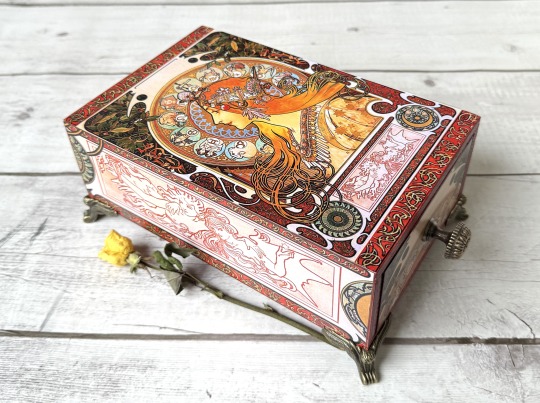
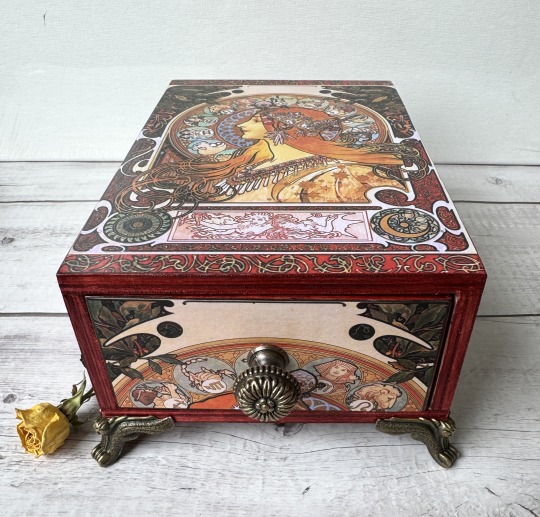
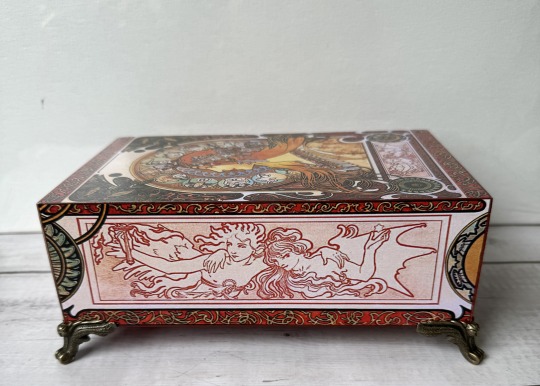
Handmade item
Ships from a small business in Poland
Materials: wood, decoupage, hand painted, felt, metal
Jewelry type: Bracelet, Brooch, Earrings, Necklace, Ring
Length: 8.3 Inches; Width: 5.0 Inches; Height: 2.5 Inches
Gift wrapping available
This wooden jewelry box inspired by the work of Alphonse Mucha, which is not just a practical box, but also a work of Art. My own design on the sides and top. Gift wrapping is included in the price. The unusual and rare shape of this box attracts attention at first sight! Dimensions - Length 21 cm (8.3 inches) Width 13.5 cm (5.0 inches) Height 7.0 cm (2.5 inches) Techniques and materials used - 1. Wood. 2. The inside bottom is made of natural felt. 3. Decorated using decoupage technique and hand-painted. I usually coat all products inside and outside with acrylic, eco-friendly, water-based, safe varnish. Please also note that I have a clean art studio, with no animals in our house and no one smokes. This decorative decoupage box serves as a charming jewelry organizer where you can store your favorite rings and earrings in style. Here you can also store your precious memories - letters and postcards. This unique handcrafted wooden ring box doubles as an earring organizer and trinket box, making it a truly versatile item. This one-of-a-kind creation is ideal as a gift for women who appreciate handmade items. It is sure to add a touch of elegance to any vanity. We also have unique vintage jewelry - you can choose and add to your unique jewelry box to make your gift even more original - https://www.etsy.com/shop/ElegantHomeStorePL Thank you for your support and appreciation of Art! Your support means the world and life to me. Your creative artist Julia 👩🏻🎨
#etsyshop#home decor#wooden jewelry box#housewarming#Alphonse Mucha#Wooden Jewelry Box#Decoupage#Decorative Box#Great Grandma Gift#Memory Box#Stash Box#Jewelry Organizer#Wooden Ring Box#Earring Organizer#Jewlery Box#Jewelry Box#Gift Elderly Women#Gifts for Girlfriend#Gifts for Mom#Gifts for Sister#Gifts for Wife#Anniversary Gifts#Christmas Gifts#Gifts for Her#Housewarming Gifts#Personalized Gifts#Gifts
11 notes
·
View notes
Text
Discover the Timeless Beauty of Dhokra Statues A Heritage of Tribal Craftsmanship
For centuries, Dhokra statues have stood as powerful symbols of India's ancient tribal artistry. These handcrafted metal sculptures are not just decorative pieces but carry with them a rich legacy of tradition, culture, and storytelling. Originating from the tribal belts of Chhattisgarh, Odisha, West Bengal, and Jharkhand, Dhokra statues are celebrated for their raw appeal and the distinctive lost wax casting technique that dates back over 4,000 years.
The Origin and History of Dhokra Art
Dhokra statues are named after the Dhokra Damar tribes, the traditional metalworkers of Central and Eastern India. The technique they use called “cire perdue” or lost wax casting was even employed in the creation of the famous Dancing Girl of Mohenjo-Daro, a relic of the Indus Valley Civilization. Over centuries, this art form has evolved but remains grounded in the same core principles and processes.
Each statue begins with a clay core shaped to the desired form, which is then covered in layers of beeswax mixed with resin and oil. Intricate designs are etched into the wax, after which another layer of clay encases the mold. When this structure is heated, the wax melts and drains away, and molten metal (usually brass) is poured into the cavity. Once cooled, the outer clay shell is broken away to reveal the final statue.
Unique Features of Dhokra Statues
What makes Dhokra statues stand apart from other forms of metal art is their rustic charm, antique finish, and tribal symbolism. The subjects often include:
Folk deities and tribal gods
Elephants, horses, and peacocks
Musicians and dancers in traditional attire
Everyday tribal life and rituals
The unpolished, matte texture and the asymmetric features of the statues are what give them their soulful, authentic character. Each piece is one of a kind due to the handcrafting process, ensuring no two statues are ever exactly alike.
Cultural and Decorative Significance
These statues are not merely ornamental. They carry deep spiritual and cultural meaning in tribal communities. Used in rituals, festivals, and as symbols of protection and prosperity, Dhokra statues hold a sacred place in local traditions.
For urban homes and art lovers, these statues serve as beautiful and meaningful décor items. They fit seamlessly into both ethnic and modern aesthetics and are especially popular in eco-conscious and minimalist settings.
Here’s why they’re highly valued:
Eco-friendly craftsmanship using natural materials
Long-lasting metalwork that resists corrosion
A rich heritage that supports tribal artisans directly
Caring for Your Dhokra Statue
Maintaining the beauty of your Dhokra statues is simple. Keep them dry and dust them regularly using a soft, dry cloth. If necessary, a touch of natural wax or coconut oil can help maintain the shine without damaging the intricate detailing.
Conclusion
When you're looking for authentic, handcrafted Dhokra statues, Divine Handicrafts is your go to destination. They offer a curated selection of stunning pieces created by skilled artisans who continue to preserve this ancient tradition with pride and precision. Whether you're an art connoisseur, a cultural enthusiast, or simply someone looking to bring a touch of tribal India into your space, Dhokra statues from Divine Handicrafts offer the perfect blend of history, spirituality, and craftsmanship.
Would you like help finding or displaying Dhokra art in a specific type of home decor?
#dokra jewellery box online#Vintage Wall Hangings for Sale#table ornaments#table centerpieces for home#handmade sculpture#dhokra statues
1 note
·
View note
Text
Industrial Garnet Market Size, Global Forecast, Industry Trends, Share, Growth, Insight, Impact of Inflation, Companies Analysis 2034
The industrial garnet market is expected to grow to a value of US$703.1 million by 2024. It is expected that the industry will grow at a rate of 5.4% CAGR between 2024 and 2034. It is expected that the industry will have grown to a value of US$ 1,189.7 million by 2034.
The growing demand for abrasive blasting processes in shipbuilding, metal fabrication, and the automotive industries is fueling an increase in demand for garnet in industry. Garnet is a highly efficient abrasive with high hardness, recyclability, and low dust generation, so it is popular in the marketplace for uses such as coating removal, surface preparation, and cleaning.
Get Free Sample Copy of This Report: https://www.factmr.com/connectus/sample?flag=S&rep_id=9422
Industry growth is due to ongoing advancements in industrial garnet processing technology. Refining, sorting, and extraction techniques are enhanced by developments that improve the quality and uniformity of garnet products. Not only do these technological advances make garnet perform better in a variety of applications, but they also provide potential for enhancing its utility, driving further industry growth.
Key Takeaways from the market Study
The industrial garnet market was estimated to be US$ 548.3 million in 2019 globally.
North America is forecasted to have a share in the market growing to 28.4% by the year 2024.
21.3% of the market will be shared by East Asia in 2024.
The US market will be valued at US$ 132.4 million in the year 2024, and a forecasted market share is expected to be 66.3%.
The Chinese industrial garnet market is expected to reach US$ 136.9 million in 2024.
Based on estimates, the water jet cutting industry is expected to hold 34.5% of the market in 2024.
"The growing demand for green and eco-friendly industrial garnet products presents a window of opportunity for manufacturers. The adoption of eco-friendly processes can meet regulatory needs as well as consumer trends," says a Fact.MR analyst.
Major Companies Featured in This Report
GMA Garnet Group
Indian Ocean Garnet Sands Company Ltd
Trimex Sands Private Limited
Barton International
Zircon Mineral Co.
Mohawk Garnet Inc.
Opta Minerals Inc.
Beach Minerals Company
Rizhao Garnet Ltd
V.V. Mineral Pvt. Ltd
Competitive Landscape
In order to enhance productivity and quality of products, industrial garnet companies are adopting cutting-edge mining and processing technology. They utilize high-end extraction methods, precise sorting, and quality control procedures. Keeping in mind industrial demands and global standards, ecologically sound and sustainable operations with technology integration are also being given high priority.
Industrial garnet startups are continuously evolving by adopting environmentally friendly mining practices, employing better processing technology, and exploring new applications for garnets. They aim to revolutionize traditional practices, reduce their adverse impacts on the environment, and meet evolving consumer demands in industries such as industrial filtration, waterjet cutting, and abrasives.
Product Portfolio
Zircon Mineral Co. is widely recognized to provide zircon and other minerals to industry. Zircon Mineral Co. specializes in extracting, preparing, and distributing zircon sand and related minerals. Zircon Mineral Co. frequently provides high-grade zircon sand for foundry casting, ceramics, refractories, and production of zirconium metal. Zircon Mineral Co. also handles other mineral products such as garnet, ilmenite, and rutile.
Mohawk Garnet Inc. is widely recognized for prioritizing the delivery of high-grade garnet products. The company specializes in processing and mining industrial garnet and provides garnet abrasives for possible applications in sandblasting, water treatment, and cutting with water jets. Mohawk Garnet Inc. is noted to have achieved reputation through emphasis on quality assurance to ensure its garnet products meet industry quality requirements.
Read More: https://www.factmr.com/report/industrial-garnet-market
More Valuable Insights Available:
Fact.MR offers an unbiased analysis of the global industrial garnet, providing historical data for 2019 to 2023 and forecast statistics from 2024–2034.
To understand opportunities in the industrial garnet market, the market is segmented on the basis of application (water jet cutting, abrasive blasting, water filtration, abrasive powders, others), and region (North America, Europe, Latin America, East Asia, South Asia & Oceania, Middle East & Africa).
𝐂𝐨𝐧𝐭𝐚𝐜𝐭:
US Sales Office 11140 Rockville Pike Suite 400 Rockville, MD 20852 United States Tel: +1 (628) 251-1583, +353-1-4434-232 Email: [email protected]
1 note
·
View note
Text
The Role of Metal Decorative Inks in Modern Printing
Metal decorative inks have carved out a significant niche in modern printing due to their ability to add a distinctive, eye-catching aesthetic to various printed materials. These inks, which contain metallic particles, provide a unique finish that can enhance the visual appeal of products like brochures, packaging, labels, and high-end marketing materials. Here, we explore the role of metal decorative inks in modern printing, focusing on their applications, benefits, and how they are revolutionizing the printing industry.
What Are Metal Decorative Inks?
Metal decorative inks are inks that contain metal-based pigments, such as aluminum, bronze, or copper, which create a shiny, reflective finish. These inks are typically used in offset, flexographic, and screen-printing processes. Depending on the type of metallic pigment used, the ink can produce effects ranging from a subtle sheen to a bold, mirror-like finish.
Applications in Modern Printing
One of the key benefits of metal decorative inks is their versatility across a wide range of printing applications. They are commonly used in:
1. Packaging: In the packaging industry, metal inks are used to create high-quality finishes that help products stand out on the shelf. Metallic inks can be applied to a variety of materials, including paper, cardboard, and plastic, enhancing the appeal of food packaging, luxury goods, and cosmetics packaging.
2. Promotional Materials: Businesses often use metallic inks for promotional items like brochures, business cards, and flyers. The shiny finish helps to attract attention and can elevate the perceived value of the brand.
3. Labels and Tags: Metallic inks are a popular choice for labels on bottles, jars, and products in industries such as beverages, cosmetics, and high-end retail. The gleaming effect created by metal inks adds an extra layer of sophistication to product packaging.
4. Greeting Cards and Invitations: In the realm of stationery, metallic inks are often used for greeting cards, wedding invitations, and other special event stationery to convey elegance and luxury.
Benefits of Metal Decorative Inks
1. Enhanced Aesthetics: The most apparent benefit of using metal decorative inks is the visual impact. Metallic finishes can add depth, texture, and a premium feel to printed materials, making them highly desirable in competitive markets.
2. Brand Differentiation: In a world where brands are constantly seeking ways to differentiate themselves, the use of metallic inks can help products stand out. The shiny finish can evoke a sense of exclusivity, helping brands position their products as high-quality and luxurious.
3. Durability and Resistance: Metallic inks tend to be more durable than regular inks. They are often more resistant to fading, smudging, and scratching, which is particularly valuable for items like packaging that may undergo handling and transport.
4. Variety of Effects: Metal inks can produce a range of effects depending on the type of pigment and the printing technique used. From glossy to matte finishes, and from fine details to broad metallic coverage, the possibilities are vast.
Challenges in Using Metal Inks
While metal decorative inks offer several benefits, they are not without challenges. One issue is the higher cost compared to standard inks, which may limit their use in certain applications. Additionally, the printing process with metallic inks requires precision and specialized equipment, as these inks have different viscosity and drying characteristics compared to traditional inks.
Another consideration is the environmental impact. The use of metal-based pigments can raise concerns about sustainability, especially if the inks are not formulated with eco-friendly materials. In modern printing, metal decorative inks offer an exciting way to elevate the look of printed materials. From packaging to promotional items, these inks provide aesthetic advantages that can significantly enhance the perceived value of products. Despite challenges such as cost and environmental concerns, the impact metal inks have on design and marketing remains undeniable, making them a valuable tool in the world of printing.
2 notes
·
View notes
Text
Construction Waste Removal: Best Practices and Efficient Solutions

Effective construction waste removal is a critical part of managing any building, renovation, or demolition project. With construction activities generating vast amounts of debris, proper waste disposal ensures a clean, safe, and environmentally friendly worksite. By adopting efficient removal strategies and sustainable practices, contractors can minimize waste-related issues and reduce their environmental footprint.
This article explores the types of construction waste removal strategies, benefits of efficient waste management, and tips for choosing the right removal solutions.
Types of Construction Waste
Understanding the types of waste generated during construction projects is essential for planning proper disposal strategies. Here are the most common categories:
1. Concrete, Brick, and Masonry Debris
These materials often come from demolition and renovation activities. They are heavy and bulky but can often be recycled and reused for road bases or new construction.
2. Wood and Timber Waste
Wood waste is generated from framing, flooring, and roofing. Untreated wood can be repurposed for other projects, used as mulch, or converted into biofuel.
3. Metal Scraps
Construction often results in metal waste, including steel, aluminum, and copper. Metals are highly recyclable and retain their quality during reuse.
4. Drywall and Plasterboard
Drywall waste is common in residential and commercial construction. Recycling drywall can prevent harmful materials from entering landfills.
5. Plastic Materials
Piping, packaging, and insulation materials contribute to plastic waste. Proper sorting can facilitate recycling efforts.
6. Hazardous Materials
This category includes asbestos, lead paint, and solvents. Handling hazardous materials requires specialized procedures to ensure safe removal and disposal.
Benefits of Efficient Construction Waste Removal
1. Environmental Sustainability
Proper waste management reduces the amount of construction debris sent to landfills, conserving resources and minimizing pollution.
2. Improved Safety on Site
A clutter-free worksite reduces the risk of accidents, injuries, and fire hazards.
3. Cost Savings
Recycling and repurposing materials can cut down on disposal fees and reduce the need for purchasing new materials.
4. Regulatory Compliance
Following proper waste removal practices helps contractors meet local regulations and avoid legal penalties.
5. Enhanced Reputation
Adopting sustainable and efficient waste management practices can boost a company’s image as an environmentally responsible business.
Construction Waste Removal Strategies
1. On-Site Sorting and Segregation
Separate waste materials into categories such as wood, metal, concrete, and hazardous substances. This practice simplifies recycling and disposal processes.
2. Recycling and Repurposing
Identify recyclable materials and partner with recycling facilities to process them. Concrete, metal, and wood are among the most commonly recycled materials.
3. Hiring a Waste Removal Service
Professional waste removal companies provide tailored solutions for construction sites, including:
Dumpster rentals
On-site sorting services
Eco-friendly disposal practices
4. Implementing Waste Reduction Techniques
Prevent waste generation by:
Ordering materials in accurate quantities
Using modular construction techniques
Reusing off-cuts and surplus materials
Choosing the Right Dumpster Size for Construction Projects
Selecting the correct dumpster size is crucial for efficient waste removal. Common sizes include:
1. 10-Yard Dumpster
Best for small projects such as bathroom renovations
Holds approximately 2-3 tons of debris
2. 20-Yard Dumpster
Ideal for medium-sized projects like kitchen remodels
Can accommodate about 4-5 tons of waste
3. 30-Yard Dumpster
Suitable for major home renovations and small commercial projects
Holds approximately 6-8 tons of debris
4. 40-Yard Dumpster
Best for large-scale demolition and commercial construction
Can handle up to 10 tons of waste
Tips for Efficient Construction Waste Management
1. Develop a Waste Management Plan
Create a detailed plan outlining how waste will be managed, including sorting, recycling, and disposal methods.
2. Train Workers
Educate workers on waste segregation, recycling practices, and safety procedures for handling hazardous materials.
3. Partner with Local Recycling Facilities
Establish relationships with nearby recycling centers to streamline the process of disposing of recyclable materials.
4. Monitor and Evaluate Waste Generation
Track the volume and types of waste generated to identify areas for improvement and optimize disposal strategies.
5. Schedule Regular Waste Removal
Avoid worksite clutter by scheduling frequent waste pickups based on the pace of the project.
Environmental Impact and Sustainable Practices
1. Recycling and Upcycling
Recycling construction materials reduces landfill waste and conserves raw resources. Upcycling, or creatively repurposing materials, adds value while reducing disposal needs.
2. Eco-Friendly Material Choices
Opt for sustainable construction materials, such as recycled steel, reclaimed wood, and eco-friendly insulation products.
3. LEED Certification
Following green building practices, including efficient waste management, can help projects qualify for LEED (Leadership in Energy and Environmental Design) certification.
Common Challenges in Construction Waste Removal
1. Handling Hazardous Waste
Disposing of materials like asbestos and lead requires specialized knowledge and permits.
Solution: Partner with licensed hazardous waste removal services that follow proper safety protocols.
2. Managing Large Volumes of Debris
High waste volumes can overwhelm worksites and complicate removal efforts.
Solution: Use appropriately sized dumpsters and schedule regular pickups.
3. Lack of Recycling Infrastructure
Some areas may lack convenient recycling facilities.
Solution: Work with waste removal companies that offer recycling solutions and haul debris to the appropriate facilities.
Cost Factors for Construction Waste Removal
Several factors influence the cost of waste removal, including:
Type and Volume of Waste: Heavier and hazardous materials often incur higher fees.
Dumpster Size: Larger dumpsters typically cost more to rent.
Rental Duration: Longer rental periods may result in additional charges.
Location: Disposal fees vary by region.
Recycling Services: Some facilities charge processing fees for certain materials.
How to Choose a Reliable Construction Waste Removal Service
When selecting a waste removal provider, consider the following factors:
Experience and Expertise: Look for companies with a proven track record in construction waste management.
Range of Services: Ensure they offer dumpster rentals, recycling, and hazardous waste disposal.
Eco-Friendly Practices: Choose companies that prioritize sustainable disposal methods.
Customer Reviews: Check testimonials and ratings to gauge service quality.
Conclusion
Effective construction waste removal is essential for maintaining a clean, safe, and environmentally responsible worksite. By adopting sustainable practices, choosing the right disposal methods, and partnering with reliable waste removal services, contractors can manage debris efficiently while contributing to a greener planet.
Start implementing these strategies today to streamline your waste removal process, reduce costs, and promote a culture of environmental responsibility on your construction projects.
#dumpster rental#house demolition#jsdisposal#waste management#junk removal#construction waste removal
1 note
·
View note
Text
How Roofing Companies in Sarasota FL Ensure Long-Lasting Roofs for Your Home
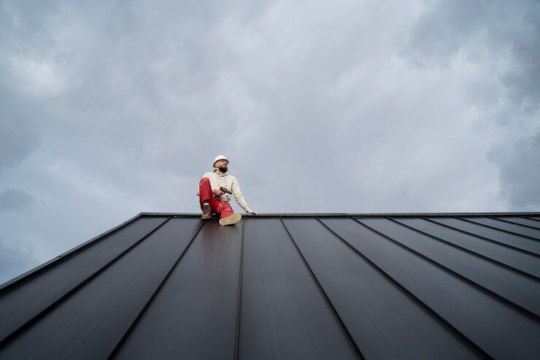
When it comes to protecting your home, having a durable, long-lasting roof is essential. In Sarasota, Florida, the region's unique weather patterns require special attention to roofing materials, installation methods, and maintenance practices. Fortunately, experienced roofing companies in Sarasota FL are equipped with the expertise and tools necessary to deliver roofs that stand the test of time.
This article explores how Sarasota roofing companies ensure your roof remains resilient, efficient, and beautiful for years to come.
Why Durability Matters for Sarasota Roofs
Sarasota’s climate is characterized by intense heat, high humidity, and heavy rainfall, with the added challenge of hurricane season. Roofs in this area face wear and tear that can significantly shorten their lifespan if not properly installed or maintained.
Local roofing companies understand these challenges and tailor their solutions to ensure your roof can withstand Sarasota's unique conditions, providing both safety and longevity.
Key Practices Used by Roofing Companies in Sarasota FL
1. Using High-Quality Materials
The foundation of a long-lasting roof starts with premium materials. Reputable roofing companies in Sarasota FL source high-grade options designed to endure the region’s climate.
Some of the most durable materials for Sarasota homes include:
Metal Roofing: Resistant to rust and heat, with a lifespan of up to 50 years.
Tile Roofing: Offers unmatched durability and can last over 100 years with proper care.
Asphalt Shingles: Affordable and designed to withstand UV rays and moderate wind.
These materials are selected not only for their longevity but also for their ability to enhance energy efficiency and curb appeal.
2. Expert Installation Techniques
The best materials can only perform well if installed correctly. Experienced Sarasota roofing contractors employ precise installation methods to ensure every roof is built to last.
Key aspects of expert installation include:
Proper Ventilation: Prevents moisture buildup and extends the roof's life.
Seamless Flashing: Ensures water doesn’t seep through vulnerable areas like chimneys and skylights.
Secure Fastening Systems: Essential for roofs to withstand strong winds during storms.
By adhering to Florida building codes and best practices, local companies provide roofs that are both resilient and compliant.
3. Weather-Resistant Features
Sarasota’s weather can be unpredictable, so roofing companies prioritize features that improve resistance to the elements:
Hurricane Straps: Reinforce the roof’s connection to the house, reducing the risk of detachment during high winds.
Impact-Resistant Materials: Protect against damage from debris during storms.
Reflective Coatings: Help combat heat absorption, keeping your home cooler and reducing energy costs.
These enhancements not only protect your home but also contribute to a roof’s longevity.
4. Regular Roof Maintenance
Even the best-installed roofs require ongoing care. Many roofing companies in Sarasota FL offer maintenance programs to help homeowners keep their roofs in optimal condition.
Regular maintenance includes:
Inspections: Identifying small issues before they escalate into major problems.
Gutter Cleaning: Preventing water buildup that can damage roofing materials.
Repairing Wear and Tear: Addressing cracked tiles, loose shingles, or other minor damage.
Proactive maintenance can extend the life of your roof by several years, saving you money in the long run.
5. Custom Solutions for Sarasota Homes
No two homes are alike, and roofing companies in Sarasota FL understand that a one-size-fits-all approach won’t work. They assess each property’s unique needs, including:
Roof design and slope.
Exposure to sun and wind.
Specific homeowner preferences, such as aesthetics or eco-friendly options.
This tailored approach ensures your roof is perfectly suited to your home and lifestyle.
The Role of Warranties in Long-Lasting Roofs
Reputable roofing companies back their work with warranties that give homeowners peace of mind. These warranties typically cover both materials and workmanship, ensuring that any defects or errors are addressed promptly.
Before hiring a roofing contractor, ask about the duration and terms of their warranties to ensure you’re fully protected.
Tips for Homeowners to Maximize Roof Lifespan
While roofing companies play a crucial role in ensuring durability, homeowners can also take steps to extend their roof’s lifespan:
Schedule Annual Inspections: Early detection of issues prevents costly repairs.
Keep Trees Trimmed: Overhanging branches can damage your roof during storms.
Inspect After Storms: Look for missing shingles, cracks, or other signs of damage.
Avoid DIY Repairs: Always rely on professionals to ensure proper fixes.
By partnering with a trusted roofing company and following these tips, you can enjoy a roof that lasts decades.
Why Choose Local Roofing Companies in Sarasota FL?
Local roofing companies have an advantage—they understand Sarasota’s specific challenges better than anyone. They know which materials work best, how to handle permitting processes efficiently, and the importance of timely storm repairs.
Additionally, choosing a local contractor means supporting your community while ensuring faster response times for emergencies or maintenance needs.
Conclusion
The longevity of your roof depends on a combination of high-quality materials, expert installation, and regular maintenance. By choosing trusted roofing companies in Sarasota FL, you can rest assured that your roof is built to withstand the region’s demanding climate.
Whether you’re installing a new roof, repairing storm damage, or scheduling an inspection, Sarasota’s roofing professionals are equipped to deliver the durability, efficiency, and beauty your home deserves.
1 note
·
View note
Text
Interior Designing Course in Delhi.
Interior Designing Course Outline
Module 1: Introduction to Interior Design
Overview of Interior Design
History and evolution of interior design
Role of an interior designer
Different fields of interior design (residential, commercial, hospitality, etc.)
Basic Design Principles
Elements of design (line, shape, color, texture, space, form)
Principles of design (balance, contrast, emphasis, rhythm, scale, harmony)
Understanding the Design Process
Project phases (concept, design development, documentation, implementation)
Client interaction and briefing
Module 2: Design Fundamentals
Color Theory and Application
Color wheel and relationships
Psychological effects of color
Creating color schemes
Space Planning
Principles of space planning
Functional and flow planning
Zoning and layout techniques
Furniture Design and Layout
Types of furniture
Ergonomics and human factors
Furniture arrangement principles
Module 3: Materials and Finishes
Introduction to Materials
Types of materials (wood, metal, glass, textiles, etc.)
Properties and applications
Surface Finishes
Paints, wall coverings, and coatings
Flooring options (hardwood, tiles, carpets, etc.)
Ceiling and lighting finishes
Sustainable and Eco-Friendly Materials
Importance of sustainability in design
Green building materials
Certifications and standards (LEED, WELL)
Module 4: Lighting Design
Basics of Lighting
Types of lighting (ambient, task, accent)
Light sources (natural and artificial)
Lighting Techniques
Layering lighting
Creating mood and atmosphere with lighting
Energy-efficient lighting solutions
Lighting Plans and Fixtures
Developing a lighting plan
Types of light fixtures
Selection and placement of fixtures
Module 5: Technical Drawing and Software Skills
Technical Drawing Basics
Orthographic projections (plans, elevations, sections)
Perspective drawing
Detailing and dimensioning
Computer-Aided Design (CAD)
Introduction to CAD software (AutoCAD, SketchUp, Revit)
Basic commands and tools
Creating 2D and 3D drawings
Visualization and Rendering
Introduction to rendering software (V-Ray, Lumion, Enscape)
Creating realistic renderings
Presentation techniques
Module 6: Interior Design Styles and Trends
Historical Styles
Classical, Gothic, Renaissance, Baroque, etc.
Influence of historical styles on contemporary design
Contemporary Styles
Modern, minimalist, industrial, Scandinavian, etc.
Characteristics and applications
Current Trends
Latest trends in interior design
Influences of technology and culture
Forecasting future trends
Module 7: Project Management and Professional Practice
Project Management Fundamentals
Planning and scheduling
Budgeting and cost estimation
Procurement and sourcing
Client Relations and Communication
Effective communication skills
Presenting design proposals
Managing client expectations
Legal and Ethical Considerations
Contracts and agreements
Building codes and regulations
Professional ethics and responsibilities
Module 8: Portfolio Development and Career Preparation
Creating a Professional Portfolio
Selecting and organizing work samples
Layout and presentation techniques
Digital and physical portfolios
Job Search and Networking
Resume and cover letter writing
Preparing for interviews
Networking and building professional relationships
Freelancing and Entrepreneurship
Starting your own design business
Marketing and branding strategies
Managing finances and accounting
Additional Resources
Recommended Reading
"Interior Design Illustrated" by Francis D.K. Ching
"The Interior Design Reference & Specification Book" by Chris Grimley and Mimi Love
Online Tutorials and Courses
LinkedIn Learning
Coursera
Udemy
Course Delivery
Lectures and Demonstrations
Hands-On Projects
Peer Reviews and Critiques
Guest Lectures from Industry Professionals
Assessment and Evaluation
Quizzes and Tests
Project Submissions
Final Portfolio Review
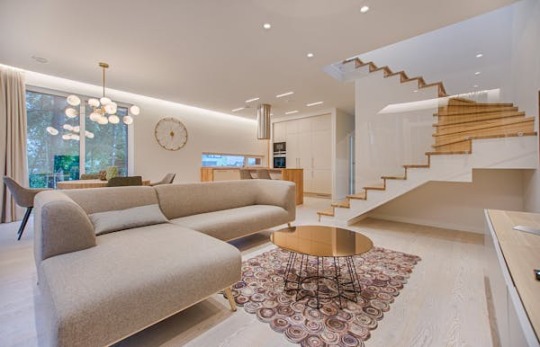
This course structure aims to provide students with a thorough understanding of interior design principles, practical skills, and professional practices, ensuring they are well-prepared for a successful career in interior design.
1 note
·
View note
Text
How Bosch Refrigerator Water Filters Keep Your Water Pure

Clean water is essential for a healthy life. Whether for drinking, cooking, or bathing, access to clean water is essential. However, with the levels of pollution and toxins in our water sources rising, it can be difficult to make sure the water we drink is pure. This is where Bosch water filters for refrigerators come into play, providing a dependable way to maintain clean, safe-to-consume water.
Knowing Bosch Refrigerator Water Filtration
Before you delve into how Bosch refrigerator water filters work, you need to understand the basics of water filtering. Water from wells and taps can contain sediment, chlorine, lead, pesticides, germs, and other contaminants. They can also trigger significant health hazards if ingested over time and can adversely influence the quality of taste and odor of that water.
These toxins must be removed through water filtration to make water safe to drink. Common filtration techniques include reverse osmosis, activated carbon filtration, mechanical filtration, and UV sterilization. This is often how refrigerator water filters use a combination of these strategies to provide clean drinking water with as few contaminants as possible.
The Bosch Advantage
Bosch is a well-known brand with quality and innovation. Bosch refrigerators feature cutting-edge filtration systems that deliver fresh, reinvigorating water from the refrigerator. Bosch refrigerator water filters are different from other filters because of their unmatched performance and sophisticated filtration technology.
Water filters in Bosch refrigerators remove such impurities as lead, mercury, chlorine, and other dangerous elements while retaining essential minerals that give the water its taste. Every single drop of water is pure and clean because Bosch filters have always had high and reliable filtration, and their high-efficiency filtration media and precision engineering make this true.
How Bosch Refrigerator Water Filters Work
Water pollutants are successfully removed from the water by Bosch refrigerator water filters through a multi-stage filtration process. Usually, a mechanical filter is used in the first step to catch bigger particles like rust and silt. An activated carbon filter, which adsorbs and neutralizes chemicals, smells, and pollutants, including chlorine and volatile organic compounds (VOCs), comes next.
With that, Bosch displays some brand new features in the refrigerator water filter itself — ion exchange as well as sub-micron filtering to increase the purity of the water. These are technologies that remove germs, heavy metals and other minute impurities from the drinking water you use and make it the safest and best quality.
Ensuring the Refrigerator's Water Purity
Bosch refrigerator water filters are more important to keep in good working order than you think, so follow recommended maintenance guidelines. That is, you substitute the filter cartridge on the recommended terms by the producer, so that the filter won’t plug up and you’ll get the maximum filtration efficiency possible. Most of these Bosch filter installations and maintenance are designed to be done without special equipment and are designed for easy installation and maintenance.
If you follow these maintenance instructions, you can be sure that your Bosch refrigerator water filter keeps providing you and your family with pure, clean water to drink. Bosch offers a range of replacement parts and accessories to assure the long-term operation of your filtration system and you the confidence your water is always refreshing and safe.
Environmental Impact
In addition to delivering clean water, Bosch seeks to reduce its renewable effect by using eco-friendly products and eco-friendly processes. Bosch refrigerator water filters are made from recyclable materials and are made with energy-efficient methods to conserve resources and reduce waste.
For recycling programs and a variety of campaigns that teach consumers about environmental matters, Bosch also encourages proper disposal of used filters. When you choose Bosch for your water filtration, you’re protecting your family’s health and safety and the earth’s future generations. Bosch water filters for refrigerators work, and well. Bosch filters are using cutting-edge filtration technology, have excellent performance, and are dedicated to sustainability, providing you with the assurance that your drinking water is clean and healthy.
2 notes
·
View notes
Text
Reduce Setup Complexity: Installing Buckley HDPE Fencing Is Basic
Easy Installation: The Simplicity of Setting Up HDPE Fences
Introduction
When it comes to property management and landscaping, fencing serves as a crucial element for defining boundaries, enhancing security, and adding aesthetic appeal. In recent years, High-Density Polyethylene (HDPE) fences have gained popularity as a modern alternative to traditional fencing materials like wood, metal, and vinyl. Notably, one of the standout features of HDPE fences is their ease of installation. In this post, we’ll explore why HDPE fences are becoming increasingly popular and delve into the simplicity of setting them up.
Understanding HDPE Fencing
High-Density Polyethylene (HDPE) is a type of thermoplastic polymer known for its exceptional strength, durability, and resistance to environmental elements such as moisture, chemicals, and UV radiation. HDPE fencing is crafted from recycled plastic material, offering a sustainable and eco-friendly fencing solution. Available in various styles, colors, and textures, HDPE fences provide property owners with versatility without compromising on durability or aesthetics.
The Simplicity of Installation
One of the primary advantages of HDPE fences is their ease of installation, making them an attractive option for property owners, landscapers, and contractors alike. Unlike traditional fencing materials that often require specialized skills and equipment, HDPE fences boast a modular design that allows for seamless interlocking of panels. With minimal hardware and tools required, setting up an HDPE fence is a straightforward process that can be accomplished in a fraction of the time compared to conventional fencing materials.
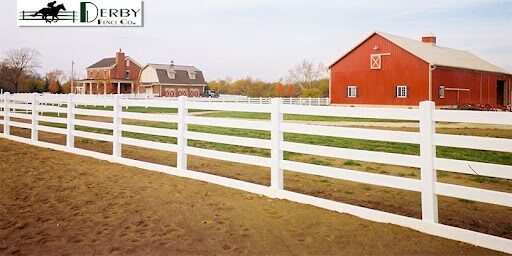
Key Features of HDPE Fence Systems
Interlocking Panels
HDPE fence panels are designed to fit together effortlessly, eliminating the need for intricate assembly techniques or specialized tools. The interlocking mechanism ensures a secure and uniform fence line without the hassle of complex installation procedures.
Lightweight Construction
HDPE fencing is significantly lighter than traditional materials like wood or metal, making it easier to transport, handle, and maneuver during installation. The lightweight nature of HDPE fence panels reduces labor costs and simplifies the installation process, particularly in challenging terrain or uneven ground conditions.
Minimal Maintenance Requirements
Unlike wood fencing, which requires periodic painting, staining, and sealing to maintain its appearance and structural integrity, HDPE fencing is virtually maintenance-free. With its resistance to moisture, rot, decay, and insect damage, HDPE fencing retains its aesthetics and functionality without the need for ongoing upkeep or costly repairs.
Customizable Options
HDPE fencing offers a wide range of customization options to suit the unique preferences and requirements of property owners. Whether seeking privacy, security, or decorative accents, property owners can choose from an array of styles, colors, and textures to complement their landscaping or architectural design.
Environmental Sustainability
HDPE fencing is crafted from recycled plastic material, reducing the demand for virgin plastic and minimizing waste in landfills. Additionally, HDPE fencing is 100% recyclable at the end of its lifespan, making it an environmentally responsible choice for property owners committed to sustainability and conservation.
Steps to Install HDPE Fencing
Installing HDPE fences is a relatively simple process, thanks to their modular design and lightweight construction. Here’s a step-by-step guide to help you install HDPE fences effectively:
Preparation
Before you begin, ensure that you have all the necessary tools and materials for the installation process. These may include HDPE fence panels, posts, rails, fasteners, a level, a measuring tape, a saw, and a rubber mallet.
Plan and Measure
Start by planning the layout of your fence line and measuring the dimensions of the area where the fence will be installed. Mark the locations for the fence posts, ensuring they are evenly spaced and aligned properly.
Dig Post Holes
Use a post hole digger to dig holes for the fence posts at the marked locations. The depth and diameter of the holes will depend on the specific requirements of your HDPE fence system. Typically, holes should be deep enough to accommodate at least one-third of the length of the fence posts.
Install Fence Posts
Place the fence posts into the prepared holes, ensuring they are level and plumb. Use a level to check for alignment in both directions. Add gravel or concrete to the bottom of the holes for stability, if needed. Allow the concrete to cure according to the manufacturer’s instructions before proceeding.
Attach Rails and Panels
Once the fence posts are securely in place, it’s time to attach the rails and panels. Start by installing the bottom rail, ensuring it is level and properly aligned with the fence posts.
Then, attach the fence panels to the rails using the provided fasteners or clips. Make sure the panels are interlocked securely to create a uniform and seamless fence line.
Secure End Posts
If your fence includes end posts, secure them in place using the same method as the intermediate posts. Ensure they are properly aligned and anchored to provide stability and support for the fence.
Trim and Finish
Trim any excess material from the fence panels or rails using a saw if necessary. This will ensure a clean and polished appearance for your HDPE fence. Additionally, you may choose to add decorative post caps or finials for a finishing touch.
Inspect and Maintain
Once the installation is complete, inspect the entire fence line to ensure everything is securely fastened and aligned properly. Make any necessary adjustments or repairs as needed. HDPE fences are virtually maintenance-free, but periodic cleaning with soap and water may be necessary to remove dirt and debris and maintain their appearance.
By following these steps, you can install HDPE fences quickly and effectively, creating a durable and visually appealing barrier for your property. Always refer to the manufacturer’s instructions and safety guidelines for specific installation requirements and recommendations.
1 note
·
View note
Text
The Art of Ink on Paper: Unveiling the Beauty of Commercial Printing in Hillsborough, NJ
In the bustling town of Hillsborough, New Jersey, the art of printing reigns supreme. From business cards that make a lasting impression to beautifully designed banners that catch the eye, the commercial printing industry is a vital aspect of the local business community, with its craftsmanship enhancing brand visibility and communication. Today, we delve into the intricate world of commercial printing in Hillsborough, NJ, to understand the value it brings to the region and the secrets of its trade.
Print media has a timeless appeal, intertwining traditional artistry with modern design and technology. Surrounded by the picturesque scenery of Hillsborough, NJ, local print shops flourish. These establishments are more than just spaces filled with machinery; they are the custodians of quality, the conduits of creativity, and the architects of art that find their way into the everyday lives of residents and businesses in the region.
From a historical perspective, Hillsborough and the broader Somerset County have been centers of local print culture, supporting local newspapers, heritage preservation, book publishing, and even clandestine printing during the American Revolution. Fast forward to the present, and the craft of commercial printing continues to evolve, with digital prowess complementing traditional printing techniques.
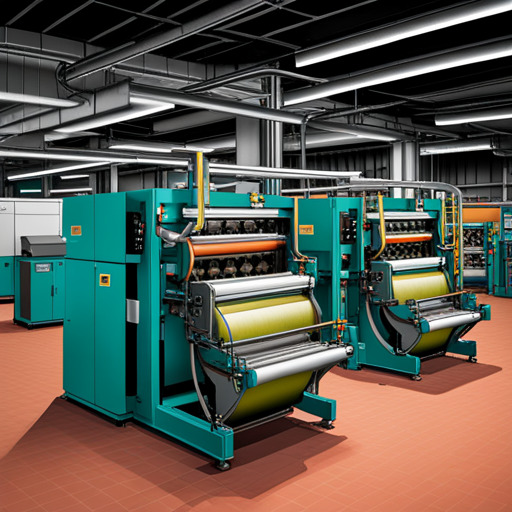
The Symphony of Colors and Machines
The Technology Behind the Tango
As the brisk hum of machines orchestrates the day, you will find that technology sits at the heart of commercial printing. Innovations in offset, digital, and large format printing have streamlined processes, allowing for speed without sacrificing the attention to detail that defines this craft.
Printing isn't simply a matter of hitting 'print' on a computer. It's an intricate process that begins with design, traverses through prepress, and culminates in production. Each step must be executed with precision to achieve the desired result. In Hillsborough, NJ, printing presses symbolize the fusion between art and machinery, where skilled operators are at the helm, ensuring that the colors dance in harmony and every impression is immaculate.
A Palette as Vast as the Imagination
The palette a commercial printing company offers is as diverse as the clientele it serves. Gone are the days of limited color options. Today, the industry buzzes with Pantones and CMYK, offering an array of shades that stretch as far as the imagination. Metallic inks shimmer, spot varnishes entice touch, and eco-friendly options appease the environmentally conscious. In Hillsborough, NJ, a printer's color expertise transforms visions into tangible hues, with a dedication to achieving the perfect tint, tone, and saturation.
Print Beyond the Page: The Impact on Business and Beyond
Branding Magic: Materializing Identity
Commercial printing is the medium through which brands manifest their identity. Logos embossed on premium paper, brochures that unfold to tell a story, and packaging that becomes an experience - these are the tools of branding that hold physical presence. In Hillsborough, NJ, print shops collaborate with businesses to ensure that every piece of print material reflects their essence and aids in customer connection.
Environmental Impact: Sustainable Printing Solutions
In an age where sustainability is not a buzzword but a necessity, commercial printing in Hillsborough, NJ, embraces green practices. From sourcing paper from certified forests to recycling by-products, the industry is making conscientious choices. The commitment to sustainable printing ensures that the beauty of ink on paper is harmonious with the environment.
Joining Forces: The Synergy Between Print and Digital Media
The Digital Dynamic: Complementary, Not Competitive
As the digital realm expands, some may speculate on print's fate. However, in Hillsborough, NJ, the symbiotic relationship between print and digital media is evident. Print is tactile, memorable, and when integrated with digital channels, it can enhance a campaign beyond the screen. The local printing industry adapts, offering services that are 'digitally conscious,' such as variable data printing and QR code integration.
Personalization: The Human Touch in a Digital World
In a world of mass communication, personalization stands out. Commercial printing allows for targeted, personalized messages that resonate with individuals on a personal level. From direct mail to custom-printed gifts, the human touch ensures that the impact is felt at an individual level, fostering deeper connections and increased responses.
The Print Reprise: A Conclusion Beyond the Fade
As we conclude our exploration of commercial printing Hillsborough NJ, we are reminded that print is not just an industry - it's an art. It is the intersection of technology, design, and human skill that creates something tangible, something real. The industry's value isn't just measured by its economic contributions but by the memories, the connections, and the experiences it helps to create.
For local businesses and beyond, the printed piece is a testament to their existence, aspirations, and achievements. It is a form of communication that engages the senses and calls to action.
The next time you hold a business card, read a magazine, or glance at a sign, take a moment to appreciate the craftsmanship behind it. In Hillsborough, NJ, commercial printing stands as a beacon of creativity, quality, and vision - a treasure to be celebrated and utilized.
In this town, on this paper, through these machines, art lives on. And it's a beautiful story to be told, again and again, in ink on paper.
#commercial printing services#printing services#web development company#web development company new brunswick#commercial printing elizabeth nj#commercial printing hillsborough nj#commercial printing metuchen nj#commercial printing new brunswick nj
2 notes
·
View notes
Text
The Craftsmanship behind Fittings Manufacturing
Fittings like plastic fittings China are connectors that connect pipes, tubes, or hoses. They are intended to form a secure and leak-proof connection, allowing for the uninterrupted passage of liquids, gasses, or even solid objects. Plumbing, HVAC systems, hydraulic and pneumatic machinery, oil and gas pipelines, and other applications all employ fittings. These little components are the unsung heroes of numerous sectors, keeping together contemporary society's complicated architecture.

Fittings: An Art Form Manufacturing
Manufacturing fittings is a complex procedure that necessitates accuracy and attention to detail. Here's a rundown of the stages required in making fittings:
Material Selection: The selection of materials is critical in the manufacture of fittings. diverse materials, such as brass, stainless steel, PVC, or copper, are required for diverse uses. The material used must be corrosion-resistant, long-lasting, and suitable for the contents transported.
Engineers design fittings with accuracy, taking into account parameters such as pressure ratings, temperature, and flow needs. To generate precise and trustworthy products, the design process may use computer-aided design (CAD).
Machining: Machining procedures like as turning, milling, and drilling are commonly used to make fittings from metal fittings manufacturer. These operations shape and refine the material into the correct shape, guaranteeing that the fitting will work properly.
Quality Control: Throughout the production process, stringent quality control methods are employed. Inspections, testing, and monitoring are performed to ensure that the fittings fulfill industry standards and requirements.
Surface Finish: Depending on the application, fittings may be polished, plated, or coated to improve their durability and appearance.
Manufacturing Fittings Innovations
In recent years, the field of fittings production has undergone considerable developments. These advancements seek to boost efficiency, decrease environmental impact, and increase product performance. Among the significant advancements are:
3D Printing: Additive manufacturing, including 3D printing, is becoming more popular for producing complicated, bespoke fits with minimal material waste.
Sustainable Materials: To lessen its environmental imprint, the industry is investigating eco-friendly materials and manufacturing procedures.
Rapid prototype: Computer-aided design and rapid prototype techniques enable the creation and testing of novel fitting designs to be completed more quickly.
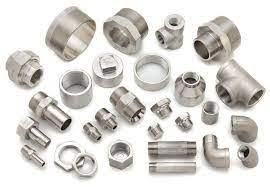
IoT technology is being integrated into fittings from plastic fittings manufacturers to monitor and optimize fluid flow, identify leaks, and increase system performance.
Follow our Facebook and Twitter for more information about our product.
#Metal fittings manufacturer#Metal fittings manufacturer China#Professional Metal Manufacturer#Metal Manufacturer China
2 notes
·
View notes
Text
"The Essential Guide to Cookware: Choosing the Right Pots and Pans for Your Kitchen"
Introduction: Cookware is the unsung hero of every kitchen, silently contributing to the delicious meals we enjoy daily. Whether you're an amateur home cook or a seasoned chef, having the right cookware can make a world of difference in your culinary adventures. In this blog, we'll explore the various types of cookware, their materials, and how to choose the best pots and pans for your cooking needs.
The Fundamentals of Cookware :Before delving into the specifics, let's cover the basics. Cookware is typically categorized into two main types: pots and pans. Pots are deep vessels with high sides, while pans have flat bottoms and low sides. Each serves its unique purpose, from simmering soups in a pot to searing steaks in a pan.
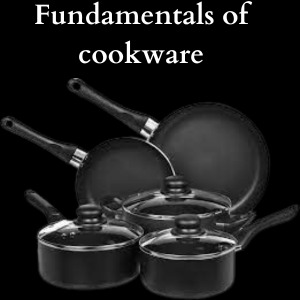
Cookware is an essential part of any kitchen, serving as the foundation for preparing delicious meals. These kitchen tools come in various shapes, sizes, and materials, each designed for specific cooking methods and recipes. Understanding the fundamentals of cookware is key to becoming a proficient cook.
Materials Matter: The material of your cookware affects how evenly it distributes heat, its durability, and its overall performance. Here are some common materials you'll encounter. Material Matter is a brand known for its innovative and sustainable cookware solutions.
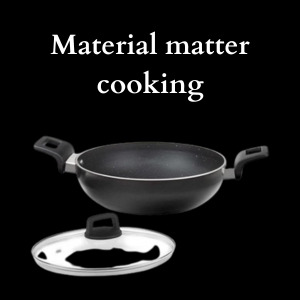
They prioritize using eco-friendly materials and cutting-edge designs to create kitchen tools that enhance cooking experiences while minimizing environmental impact. From non-stick pans to versatile utensils, Material Matter aims to redefine the way we cook and care for our planet.
Stainless Steel: Known for its durability and resistance to staining, stainless steel is versatile and non-reactive. It's ideal for browning, searing, and deglazing. Stainless steel cookware is a popular choice among home chefs and professional cooks alike due to its durability, versatility, and sleek appearance.
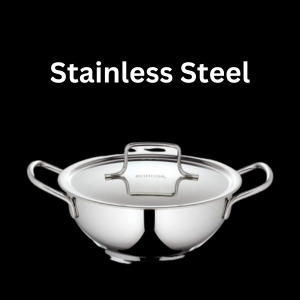
Crafted from an alloy of iron, chromium, and other metals, stainless steel cookware is resistant to rust and staining, making it a long-lasting kitchen staple. Its even heat distribution and non-reactive nature with food make it ideal for a wide range of cooking techniques. In this introduction, we'll explore the benefits and versatility of stainless steel cookware, as well as its maintenance and care to ensure it remains a valuable addition to your kitchen.
Cast Iron: Cast iron cookware retains and distributes heat exceptionally well. It's perfect for slow-cooking, frying, and baking. Seasoning your cast iron adds a natural non-stick surface. Cast iron cookware is a versatile and durable kitchen essential that has been used for centuries. It's made from molten iron that's poured into molds, creating pots, pans, and skillets known for their exceptional heat retention and even heating.
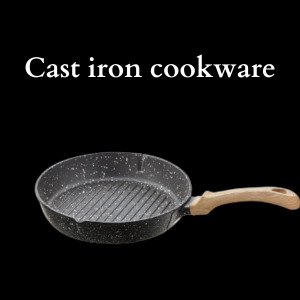
These qualities make cast iron cookware a favorite among professional chefs and home cooks alike. Whether you're searing, frying, baking, or even grilling, cast iron can handle it all. With proper care, it can last a lifetime and develop a natural non-stick surface known as seasoning. Let me know if you'd like to learn more about how to use and maintain cast iron cookware or have specific questions!
Non-Stick: Non-stick cookware has a coating that prevents food from sticking, making it easy to clean. However, it may require gentle care to avoid scratching the surface. Non-stick cookware has revolutionized the way we cook by making food preparation easier and more convenient. These kitchen essentials are typically coated with a non-stick surface, often made from materials like PTFE (Teflon) or ceramic, which prevents food from sticking to the pan.
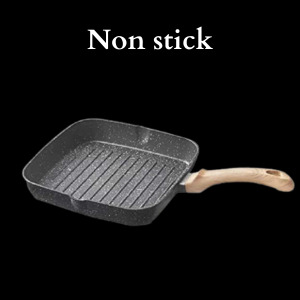
This innovation has reduced the need for excessive oil or butter in cooking, making meals healthier and cleanup a breeze. In this conversation, I can provide you with information, tips, and recommendations related to non-stick cookware
Copper: Copper cookware offers rapid, even heating but often requires a lining of stainless steel or tin to prevent reactivity with certain foods. Copper cookware has a rich culinary history dating back centuries. Renowned for its exceptional heat conductivity, copper cookware offers precise temperature control, making it a favorite among professional chefs and cooking enthusiasts alike. In this guide, we'll explore the benefits, care, and versatility of copper cookware, helping you elevate your culinary skills and create delicious meals.
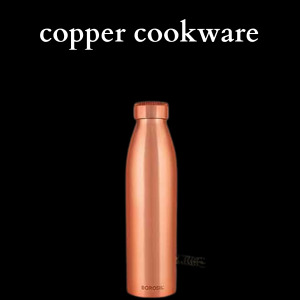
Aluminum: Lightweight and affordable, aluminum cookware heats quickly but may react with acidic foods. Anodized aluminum is a more durable and non-reactive option. Aluminium cookware is a popular choice in kitchens worldwide due to its lightweight, excellent heat conductivity, and affordability. It's commonly used for a wide range of cooking tasks, from sautéing to boiling.
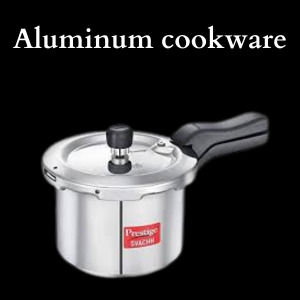
However, it's important to note that uncoated aluminium cookware can react with acidic or alkaline foods, potentially affecting taste and safety. To address this, many aluminium pans have nonstick or anodized coatings. Anodized aluminium is more durable and resistant to corrosion. When choosing aluminium cookware, consider your cooking needs, maintenance preferences, and potential health concerns associated with aluminium exposure.
Choosing the Right Cookware: The cookware you select should align with your cooking style and needs. Here are some considerations. Choosing the right cookware is essential for achieving great results in the kitchen. From pots and pans to utensils and bakeware, selecting the right tools can make cooking more efficient and enjoyable.
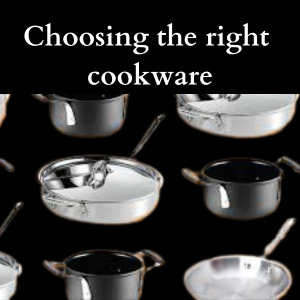
In this guide, we'll explore the key factors to consider when choosing cookware, including material, heat conductivity, durability, and maintenance. Whether you're a seasoned chef or a beginner in the kitchen, making informed choices about your cookware will help you elevate your culinary skills and create delicious meals.
Conclusion :Investing in high-quality cookware is an investment in your culinary journey. By understanding the fundamentals of cookware materials and choosing pieces that align with your cooking style, you'll be well-equipped to create delicious meals for years to come. Remember, the right cookware is not just a tool; it's a partner in your culinary adventures. Happy cooking!
#cookware#kitchen#utensils#home & lifestyle#kitchen appliances#stainless steel#manufacturers#daily update#home cooking#main dishes#alluminum fence#stainless steel kitchen appliances#cooker
2 notes
·
View notes